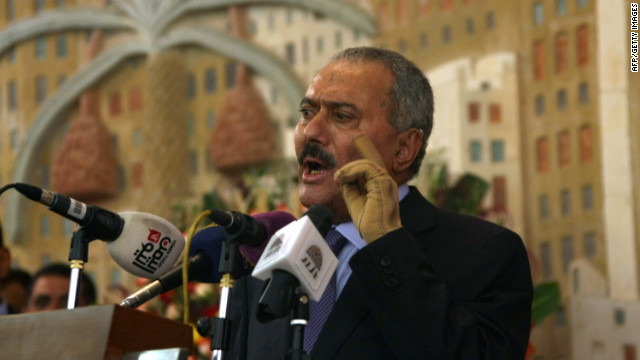Story highlights
- Ex-President Ali Abdullah Saleh is admitted to a military hospital in Sanaa, an official says
- It's the second time Saleh, hurt in a June 2011 attack, has been to the hospital this month
- There are "concerns" that Saleh "still needs more medical procedures," the official says
- After 30 years in power, he stepped down amid domestic and international pressure
Former Yemeni President Ali Abdullah Saleh was admitted Sunday to a military hospital in Sanaa, the second time that he's been to a hospital this month, a government official said.
Saleh led Yemen for 30 years before stepping down, amid widespread protests as well as international pressure, last November as part of a long discussed deal brokered the six-nation Gulf Cooperation Council.
He suffered extensive burns and a collapsed lung in a June 2011 strike on the mosque in Yemen's presidential compound, a U.S. government official said then. In subsequent months, he has gotten continued medical treatment in various places, including in Saudi Arabia and New York.
The Yemeni official said Sunday that Saleh was in the hospital for "a scheduled checkup, not an emergency," while acknowledging he continues to face health issues.
There are "concerns from Saleh's staff that he still needs more medical procedures and treatment," the government official said.
Since leaving office last year, Saleh has remained a force in Yemeni politics. That includes threatening this March to withdraw all members of the nation's ruling party, which he still heads, from the national government and warning Prime Minister Mohammed Saleh Basendowah he could face imprisonment.
The leaders of the current government have expressed support for extensive reforms, while Basendowah attended a ceremony at Change Square in Sanaa and condemned the old regime's attacks against unarmed youth protesters.
U.S. President Barack Obama issued an executive order last Wednesday targeting "those who threaten the peace, security, or stability of Yemen," including by obstructing implementation of the transition agreement.
The new order allows the U.S. Treasury Department to freeze U.S.-based assets of anyone who might subsequently be listed under the order. While no specific entity was named, it is widely believed to be aimed at the former president's circle.






